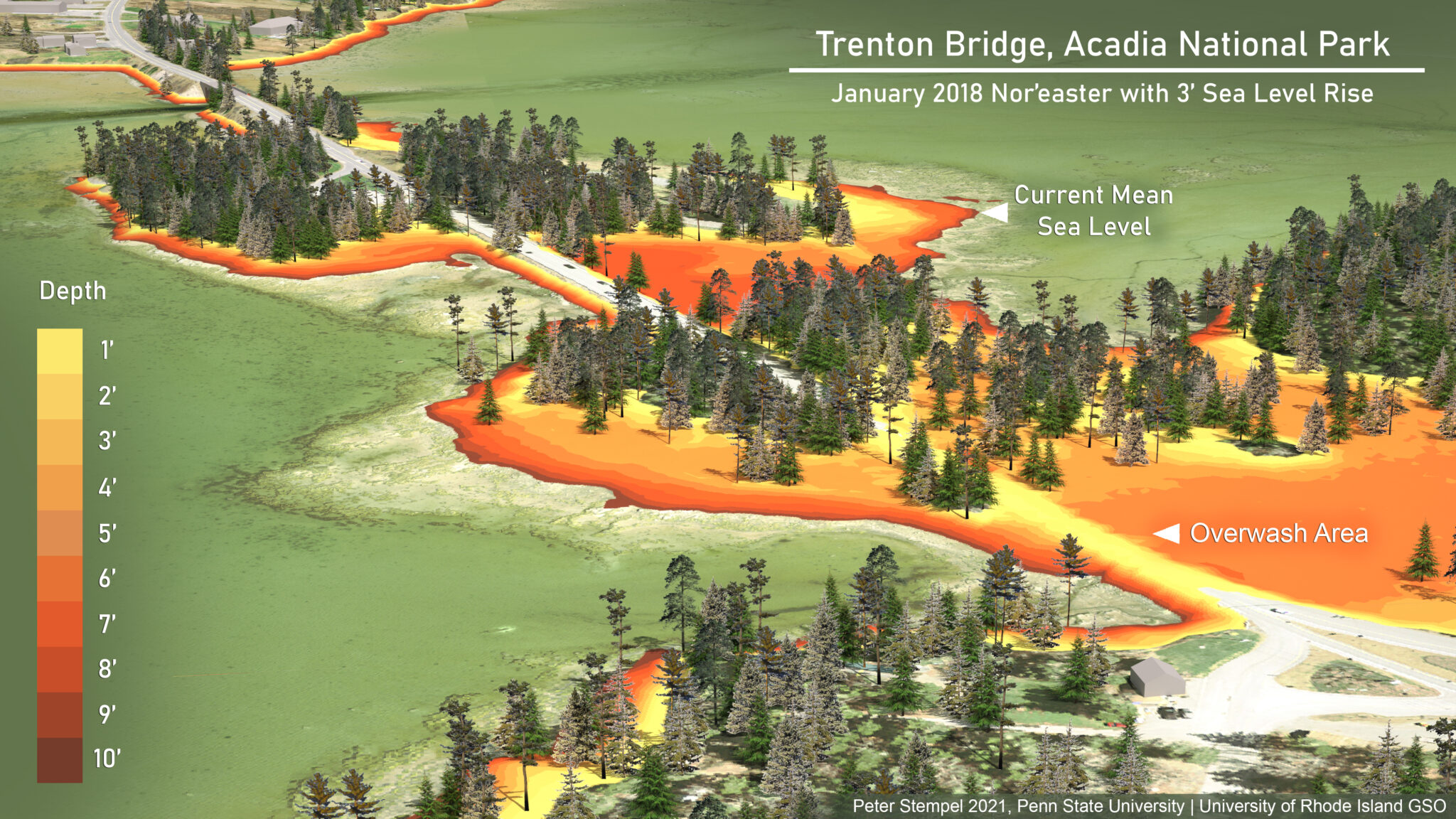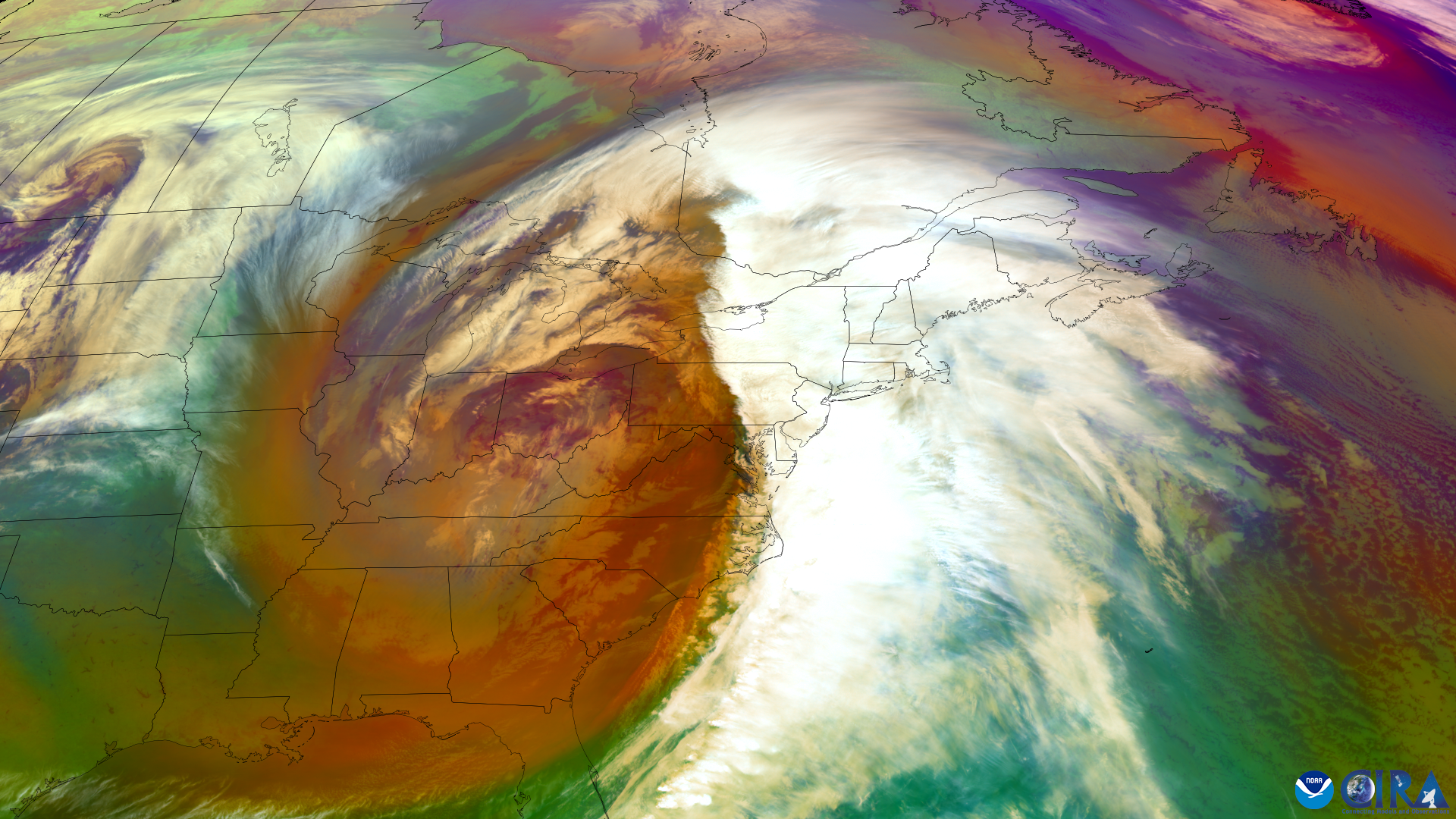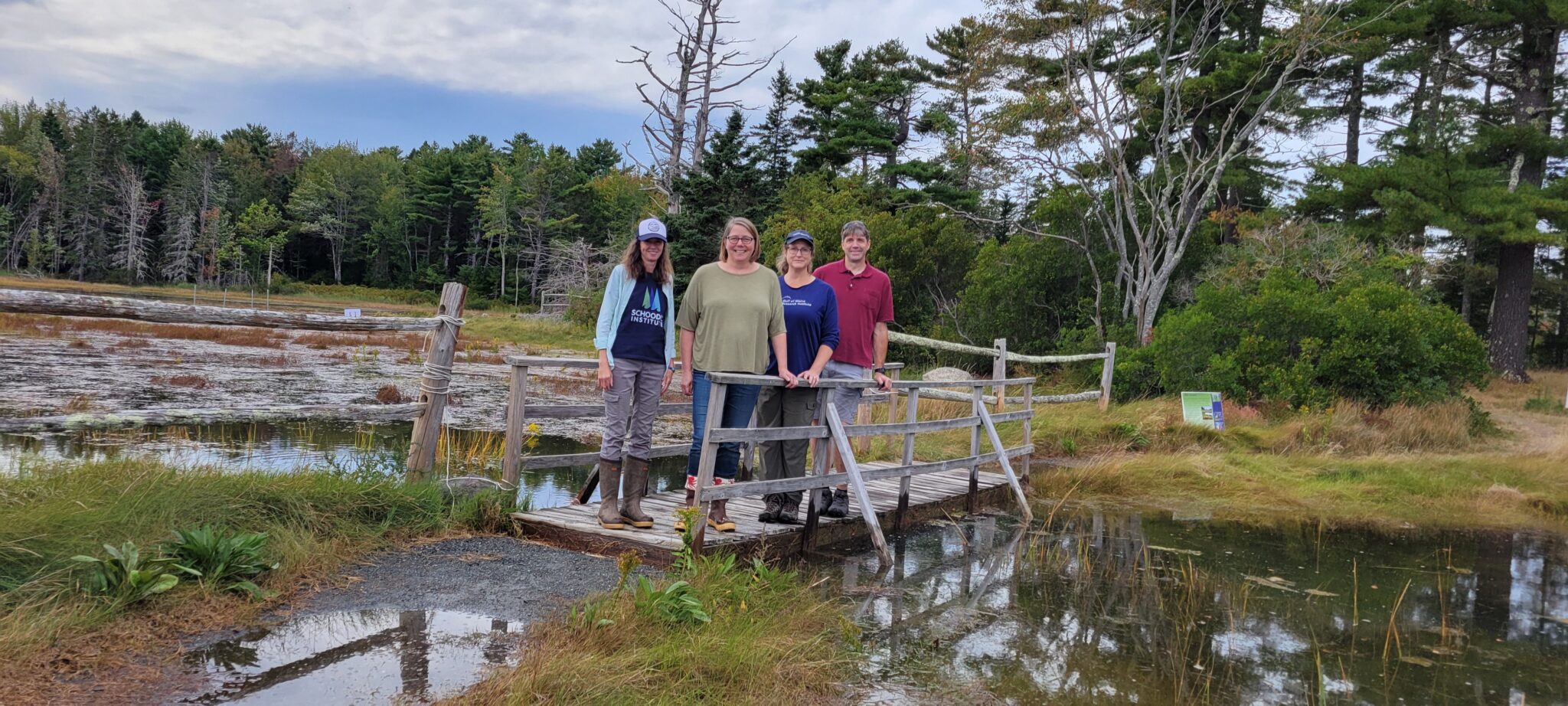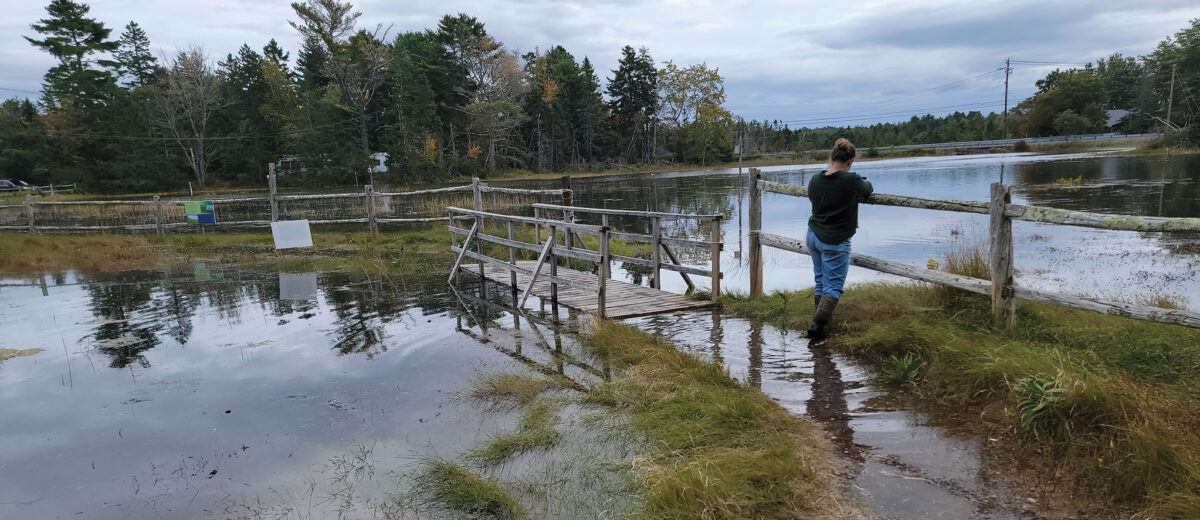Winter storms including Nor’easters have become both more frequent and more intense in the last 30 years, and are the most common storm affecting Acadia National Park. In 2018, University of Rhode Island oceanography professor Isaac Ginis and graduate student Deb Crowley began modeling the impacts of future nor’easters and coastal flooding in Acadia National Park, as well as National Parks of Boston and Cape Cod National Seashore. They published their work in 2024 in the National Park Service Science Report Series.

Science Communication Specialist Catherine Schmitt worked with these researchers and with staff at all three parks to develop related interpretive and educational products and programs, and inform guidance for communicating about sea level rise, storms, and climate change in parks, published in the Summer 2024 issue of Park Science.
The article highlights some best practices, such as making climate change information as local as possible, acknowledging science as one of many ways of knowing, avoiding pessimism and apathy by presenting solutions and actions, and welcoming others to participate in science to understand our changing world.
Our collaboration with University of Rhode Island and Penn State has continued with funding from the NOAA Effects of Sea Level Rise program. Tracking “king tides” is part of this effort.

This fall’s highest high tides arrive on October 17-19 and November 14-17. View previous flood levels and contribute your own observations via the Gulf of Maine King Tides Project.

